From Pixel Pushers to Strategic Growth Influencers
By instilling team process and embedding user-centric design principles into every layer of product development, I shifted Pie’s design team from delivering outputs to generating outcomes, redefining the team’s role within the organization.
TL;DR
- I matured Pie’s design workflow by coaching user-focused practices and iterative methods, boosting team visibility and solution quality.
- I led small-scale experiments that demonstrated a user-first approach delivers better solutions than traditional top-down methods.
- I collaborated with leaders across Pie to embed Product Designers into business operations, driving the company toward a product-led growth model.
Defining Design Team Operations.
Upon transitioning from Principal UX Designer to UX Manager at Pie Insurance, I led an operational transformation that redefined the design team’s workflow process. These changes improved UX initiative visibility and accurately forecasted team bandwidth.
Leveraging my front-end engineering background, I coached Agile-inspired practices alongside a variant of the Double Diamond framework that integrated build activities, fostering early collaboration with engineering and enabling precise roadmap planning with Product.

I structured the team’s JIRA board to mirror the Double Diamond framework, organizing workflow phases into Pre-Ideation, Ideation, Solution Design, Build, and Done, reinforcing the non-linear, user-centered design process.
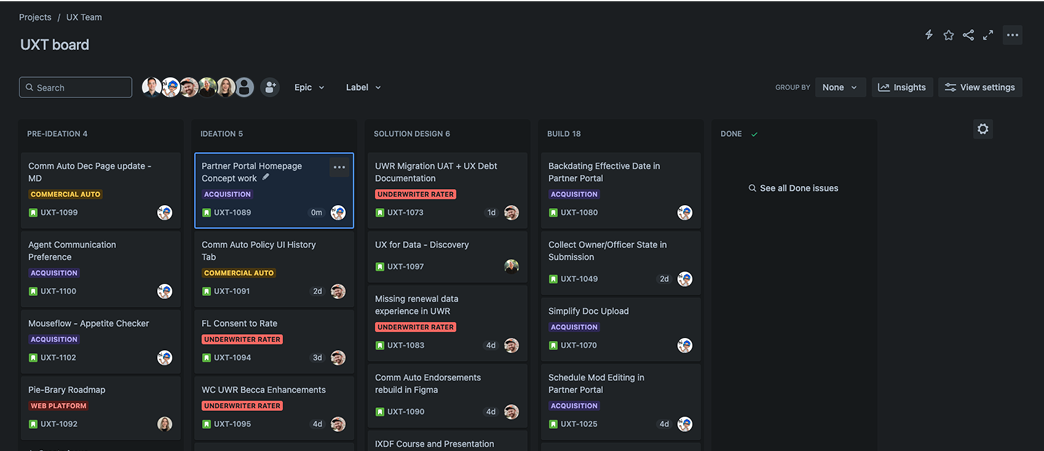
I defined and documented criteria for Stories, Tasks, and Spikes. Spikes tracked discovery and research initiatives that generated business-driven stories. As a team, we discussed these stories during grooming sessions, with individual tasks added based on initiative size. Stories were pointed and assigned at monthly planning sessions based on designer bandwidth and expertise.
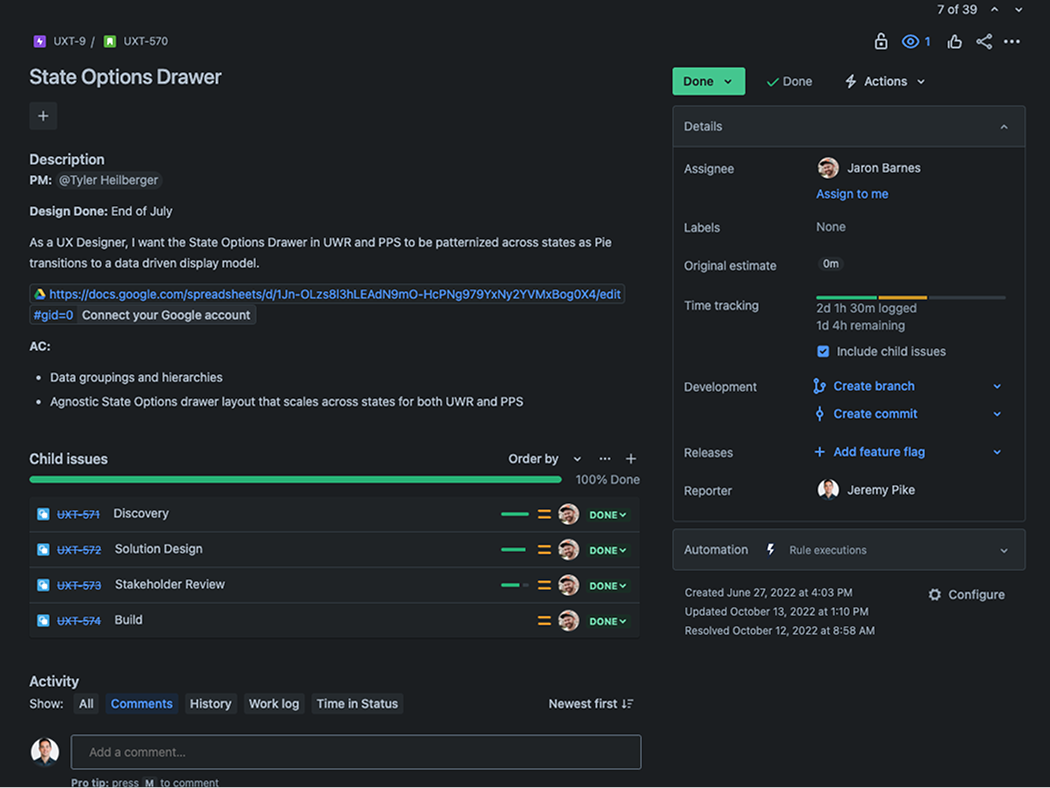
Measuring Workflow Effectiveness.
By requiring designers to track time per task, it provided me with measurable insight into our workflow activities. Six months after launch, the metrics revealed a concerning trend: designers were spending most of their time on solution design, effectively bypassing the research and discovery phase of the Double Diamond framework.
I hypothesized that the process gaps weren't solely due to designer shortcomings but stemmed from Pie’s reliance on top-down solutions, limited research time, and a fundamental misunderstanding of user-centric design.
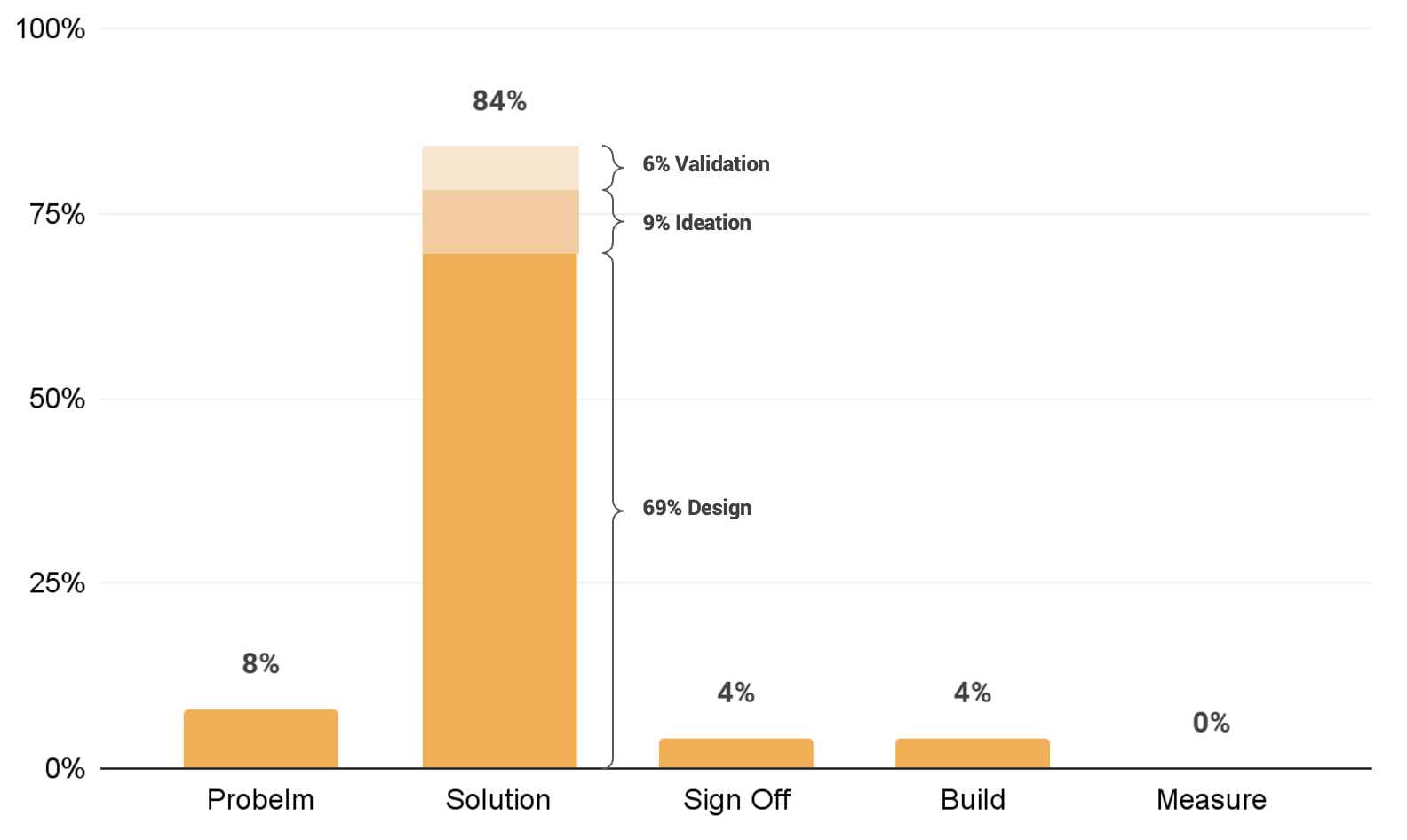
Proving the Value of a User-Centric Approach.
To tackle adoption challenges and shift the company mindset, I led a small-scale experiment with the talented Mariah Durand (UXD) and methodical Jay Lee (PM) to validate the value of user-centric design. Our goal was to test whether user-focused activities could outperform traditional top-down solutions and drive more effective outcomes.
Manual loss run collection was a known pain point for agents and underwriters, prompting us to ask, ‘How might we eliminate loss runs during the new business acquisition process?’. Our interviews with underwriters, insurance agents, and key stakeholders provided insights into Pie’s risk appetite and competitive practices and uncovered that Rating Worksheets and Risk History reports offer similar data immediately after policy issuance.
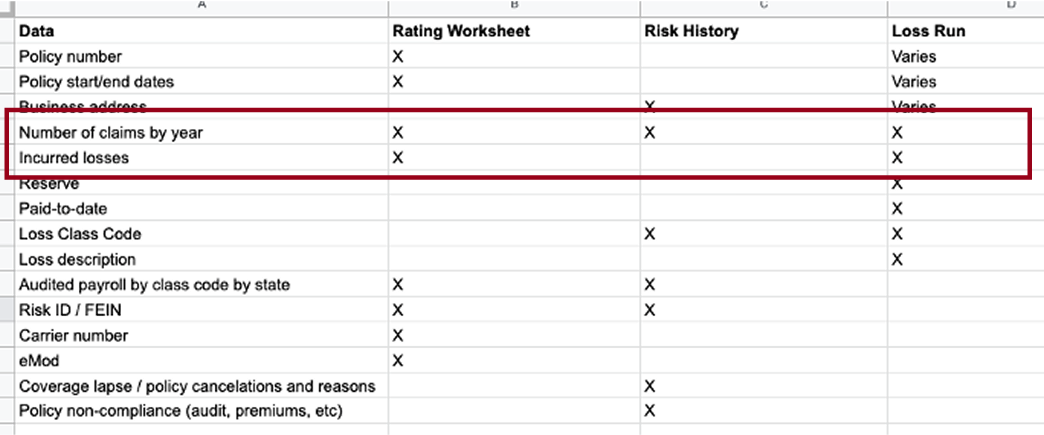
After several iterations and failed ideas, we proposed a solution to eliminate loss runs for businesses with no claims in the past 12 months and omit loss statements for those with no claims in the three prior policy terms, aligning with Pie’s frequency-over-severity model. Rating Worksheets and Risk History reports would be collected immediately after policy issuance, with alerts triggered if the reported loss history didn’t match.
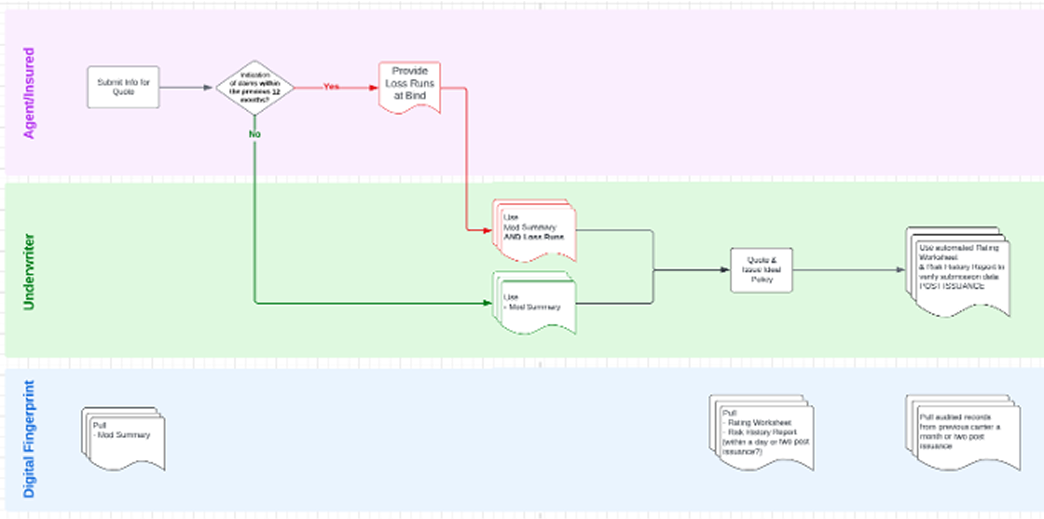
The solution streamlined new business acquisition for agents and underwriters by automating document collection and review, increasing agent preference while reducing operational overhead. Most importantly, it demonstrated that a user-centric design process could deliver more effective solutions than the traditional top-down approach.
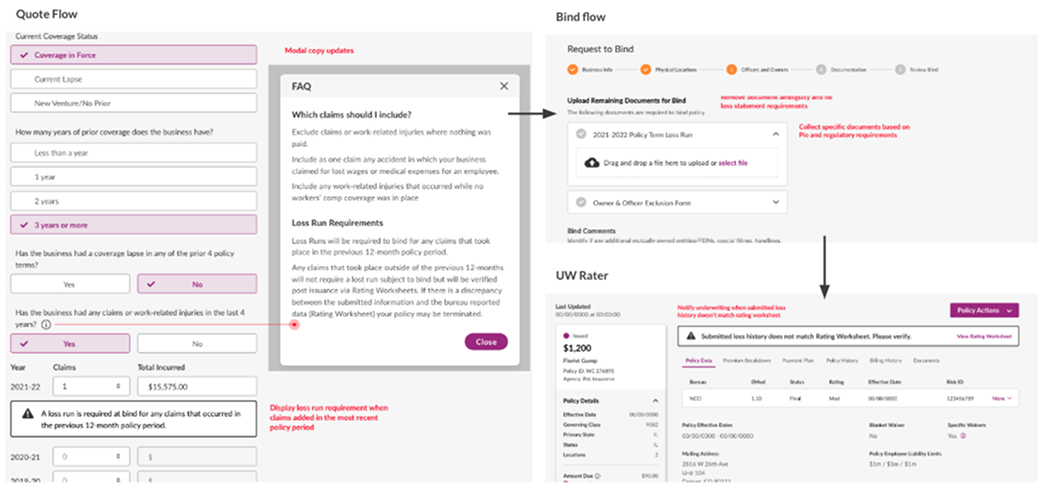
Changing Behaviors and Building Influence.
Building on the success of the loss run experiment, I collaborated with my product leadership team peers over the next 18 months to drive a company-wide shift toward a Product-Led Growth model, seamlessly integrating user-centered design into the organization’s evolving strategy.
Collaborating with Pie’s Chief Product Officer, I defined Pie’s primary user base and identified their key needs while helping develop a Growth Flywheel that leveraged Pie’s strategic advantage in price segmentation.
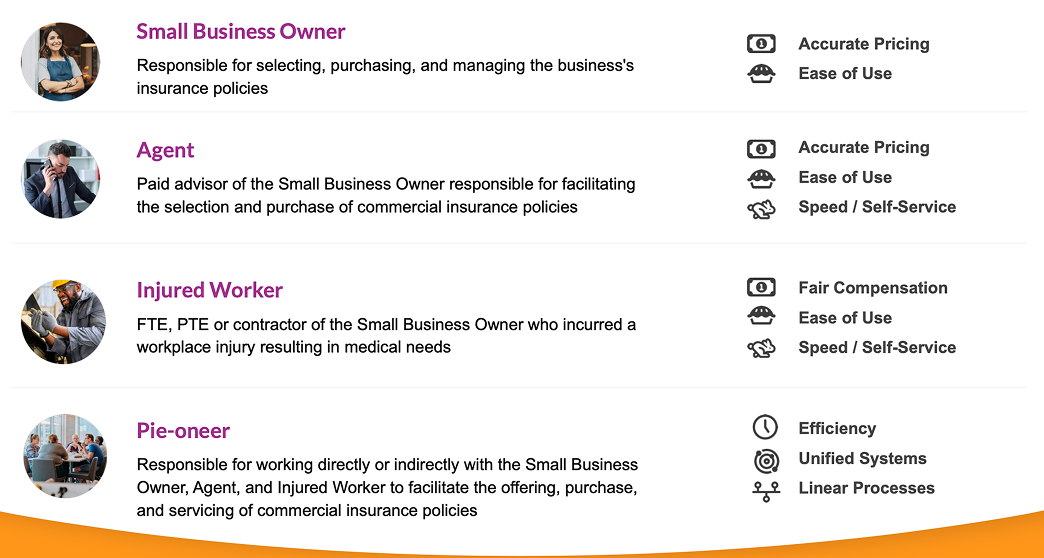
Recognizing the need for better research documentation and sharing, I led the team in mapping key user journeys, integrated the behavioral analytics platform MouseFlow to track user behaviors, and implemented a Dovetail-powered customer insights hub to centralize our findings, all while regularly championing insights at company all-hands.
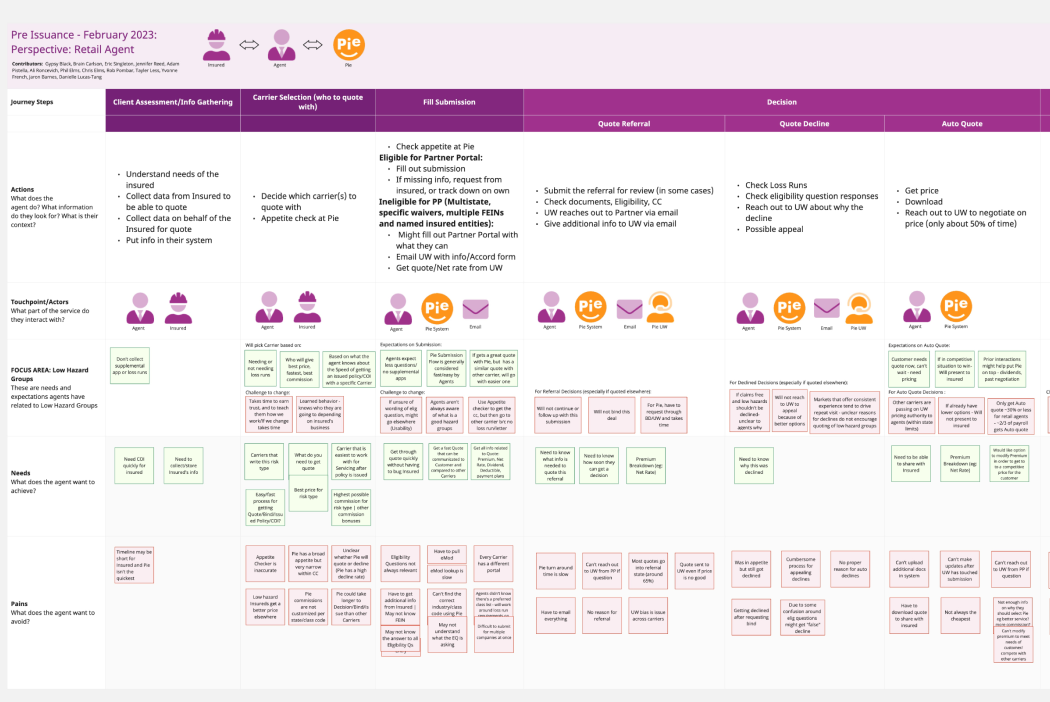
Finally, I forged cross-department partnerships to embed product designers into business operations; partnering with marketing to review funnel metrics, with customer service to compile time-on-task data, and with business development to capture authentic agent experiences, both virtually and in-person.
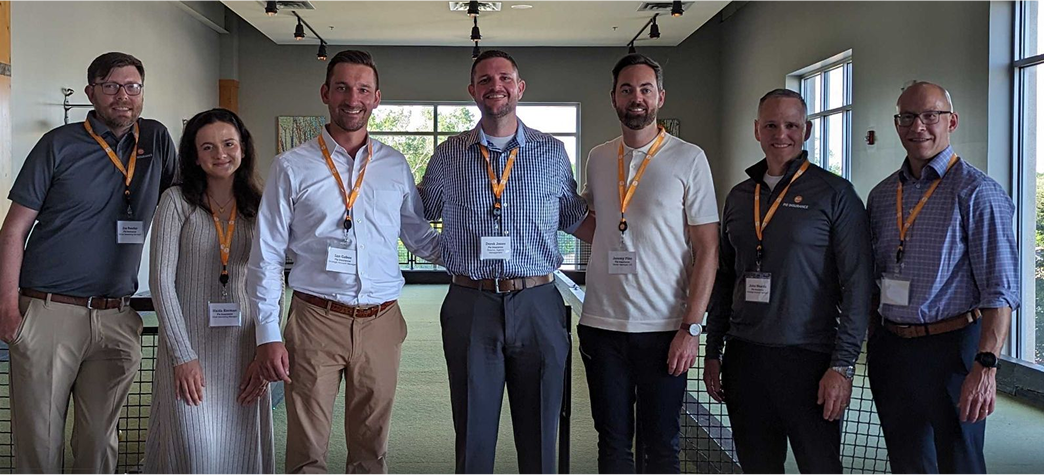
A Continuous Discovery Machine.
This years-long transformation elevated the UX department from a tactical function to a key driver of ROI.
At the time of my departure, user-centric discovery processes had become integral to portfolio strategy and roadmap prioritization, positioning design as a core engine of organizational growth. This evolution culminated in rebranding the department from UX to Product Design—a clear acknowledgment of its elevated role within the organization and a testament to the leadership I brought to this evolution.
